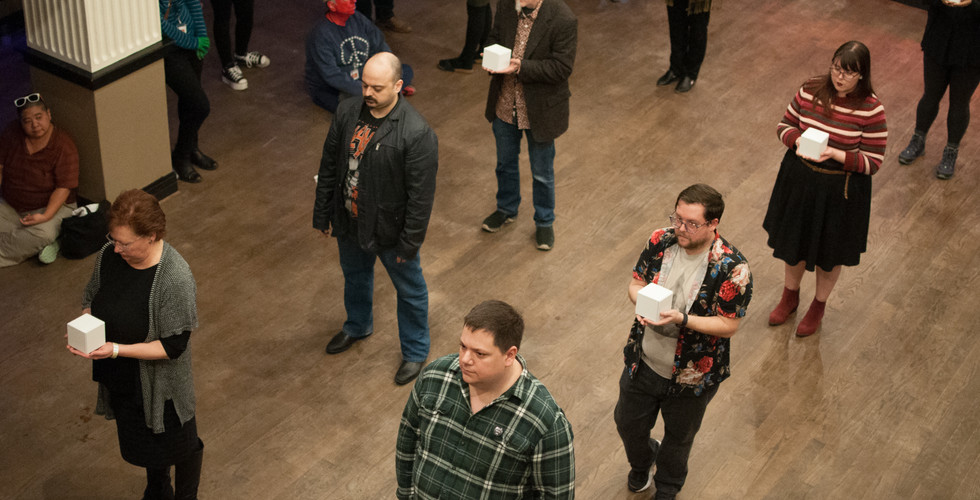ExA 2019 in Review: Roos Hoffmann
- Joy Harris
- May 7, 2019
- 2 min read
ROOS HOFFMANN
Eldorado 2.0
February 21, 2019
Netherlands-based artist Roos Hoffmann directed a participatory work on February 21, 2019 at Experimental Action Festival. Using the ground level of Rockefeller Houston’s open, two-story theatre space, Hoffman asked twelve people to stand, motionless and silent, in a 4 x 3 grid configuration for approximately 15 minutes.
If you were one of those people, which I was, this seemed almost a lifetime.
At the beginning of the event, Hoffmann gently escorted participants, one by one, to a specific location on the grid. While doing so she whispered a single directive: extend your arms in front of you as if you are displaying a small treasure to the world. These actions did not become immediately evident, but the grid emerged slowly into an embodied geometric form. As this happened, a hush fell over the room.
Hoffmann’s work at Experimental Action is similar to her previous work “Eldorado,” which took place on a streetscape in The Netherlands. In the documentation of that work, participants stood out as bodies amongst the surrounding architecture. This sense of architecture was more multi-dimensional at Rockefellers, however, because spectators could view the grid both at ground and mezzanine level. From the higher point of view, participants seemed to be part of the architecture of the building, seen alongside the columns and rafters. From the ground level, the arrangement of bodies generated a type of tension within the otherwise bustling and chaotic room.
As a participant, I became immediately aware of the complexity of the audience’s gaze, which surrounded me from every point of view. And as our group stood there – motionless and silent – we began to share uneasy glances from many of the spectators. How long were we going to stand there and, more importantly, could I stand still long enough that I didn’t break the configuration?
Standing there, I knew I was unable to escape the audience’s gaze. I experienced a shift in my body and mind. I had to retreat away from the eyes that surrounded me and settle into my own form of quietude that was grounded in the building itself and the relationship I had with my fellow participants. It was then that the action took on a form of meditation.
It was easier for my mind to move away from the crowd than it was my body, which began to feel uncomfortable. When are we ever really still for 15 minutes, captive in the gaze of strangers?
The stillness and quietness of Hoffmann’s work was imbued with a level of reserve that seemed, in some ways, severe after the decadent and deconstructive work of several of the works that preceded it, but it is for this very reason that Hoffmann’s work was even more poignant.
As both spectator and participant, you had to cast aside the spectacle and reconsider what it meant to engage, interact, and perceive. Small details like shifts of weight, heavy sighs, and darting eyes became grander gestures.

















































Comments